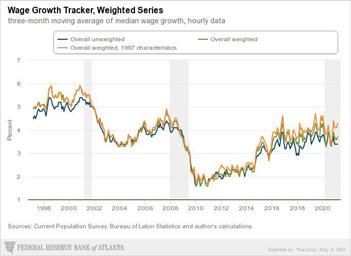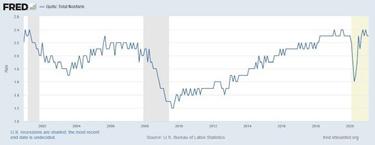
5 minute read
Getting Back to Work
The Jobs Gap – and How Washington Can Help Fix It
This REACH issue is dedicated to helping companies bring people back to work. Your Chamber has led the way from the very beginning of the pandemic, with resources, tools, and webinars to help guide businesses through last year’s shock to our people and to our economy.
As vaccination rates increase and more companies are relaxing restrictions, the economy is rebounding and so are people. The new buzz phrase amongst social commentary and financiers is the “hot vax summer.” But even with the levity, new issues evolved surrounding shortages around workers and resources, as well as good intentions gone awry. The pent-up demand consisting of people wanting to get out and socialize, creating a new golden age, is real.
We supported ceasing the $300/week additional federal unemployment aid to Texas workers, as a motivator for people to return to work.
“This is one of the issues impeding
economic progress.” – DANA PARR
The U.S. Chamber of Commerce Chief Economist, Curtis Dubay, summed it up best in his article, “The Jobs Gap - And How Washington Can Help Fix It.”

THE JOBS GAP - AND HOW WASHINGTON CAN HELP FIX IT
Friday’s (June 11, 2021) job report was a big miss. Most analysts expected the economy to create one million jobs in April. Instead, businesses added a paltry 266,000 new jobs—that’s a gap of almost 750,000 jobs. Did I say it was a big miss? However, the unemployment rate remained essentially unchanged at 6.1 percent. At the same time, wages rose 0.7 percent from March and the labor force increased 430,000 overall. As first glance, it seems the economy is sending us lots of mixed signals.
But is it? Taking a bit closer look at the numbers provides us some answers and the key is the labor market. At the Chamber we’ve been hearing for months now from businesses of all sizes that hiring the right workers has become increasingly difficult. It’s not a question of the wrong incentives—across industries, the right workers simply cannot be found. Some of the reason workers aren’t reentering the workforce are due to medium- to long-term impacts of the pandemic: Some workers are still reluctant to take jobs because of COVID-19 concerns, while others are at home caring for children.
But there is another fundamental reason the pool of available workers has shrunk. Increasingly, businesses are struggling to compete with overly-generous government benefits, including the $1,400 checks that went out in March and the extra $300 per week in unemployment benefits paid by the federal government under COVID relief bills passed by Congress. Now, what were once anecdotal reports of employers having a tough time finding workers, are showing up in the data.
The tightness in the labor market is highlighted by wage growth and the quit rate (hat tip to Michael Strain of the American Enterprise Institute). According to the Atlanta Fed, median average hourly wage growth in March 2021 of 3.7 percent is about equal to the February 2020 level of 3.9 percent (before the pandemic). If you can remember back to early 2020 before the pandemic struck: the labor market was tight and this was forcing wages up sharply, especially for the least-skilled workers. Today, as the reopening gathers momentum, businesses are forced to compete, raising wages to attract and retain workers.
At the same time, the quit rate has increased. The quit rate refers to employees who leave companies of their own accord as opposed to being fired or laid off. In times of economic uncertainty, quit rates drop. When the economy improves, quit rates increase. Today, the quit rate is above where it was pre-pandemic despite the fact that overall jobs in the U.S. economy have not reached pre-pandemic norms. This is a sign workers are finding better opportunities—or more money—elsewhere and therefore willingly leaving their jobs. It is also another indicator of a very tight labor market.


An overly tight labor market with the wrong incentives matters because it has the potential to stall the recovery. Think about it. All things being equal, we anticipate the economy growing around 10 percent this quarter and strongly the rest of the year. But that forecast assumes businesses can find and hire willing workers who won’t quit quickly. Today, with Washington still providing the wrong incentives, that picture is murky. Unless more workers reenter the workforce, business will find it hard to meet customer demand and get their businesses up and running like they were before the pandemic. And that has the potential of derailing the whole recovery. Just ask your local small business owner.
The good news is that something can be done immediately to stop the artificial, policy-driven constraints on the labor market. The most immediate step is for Congress to end the extra $300 per week unemployment benefit. According to a Chamber analysis, this extra $300 benefit results in approximately one in four recipients taking home more in unemployment insurance than they would have earned by working. And don’t forget: this is an extra $300 above and beyond the regular unemployment insurance which workers would continue to receive. Together, this means the average unemployment recipient earns more than the equivalent of working full-time at $15 an hour.
In other words, about 25% of available workers are staying on the sidelines because of misguided incentives. Ultimately, these incentives hurt America’s businesses and workers themselves who could stand to benefit from a more broad-based recovery. It’s time for Congress to suspend this extra payment, help alleviate the labor shortage, and get America ready for a full-throttle reopening and recovery. In the end, that’s what will get this recovery back on track.
http The Jobs Gap—And How Washington Can Help Fix It s://www.uschamber.com/series/above-the-fold/the-jobs-gap-and-how-washington-can-help-fix-it





